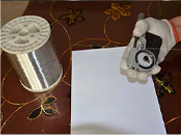Dec . 04, 2024 05:58 Back to list
CE Certification Standards for Wire Netting Industry Compliance and Quality Assurance
Understanding CE Certification in the Wire Netting Industry
In recent years, CE certification has emerged as a critical requirement for various industries, including the wire netting sector. This certification, which stands for Conformité Européenne (French for European Conformity), signifies that a product meets the standards set by the European Union (EU) and complies with relevant safety, health, and environmental protection legislation. As the wire netting industry expands globally, understanding the significance of CE certification becomes increasingly crucial.
The Importance of CE Certification
CE certification is vital for wire netting products for several reasons. Firstly, it reflects quality assurance and consumer safety. Wire netting is widely used in a variety of applications—from agricultural to construction, and in food processing industries. The materials and manufacturing processes involved can pose risks if not properly regulated. CE certification ensures that the products have been tested and meet the stringent requirements set by EU regulations, providing confidence to manufacturers and consumers alike.
Secondly, CE certification opens up market opportunities. For manufacturers outside the EU looking to sell their products in European markets, achieving CE certification is often a non-negotiable requirement. Without it, products may be barred from being sold within the EU market, limiting business growth and competitive advantage.
The CE Certification Process
Achieving CE certification involves several steps. Manufacturers generally begin with a self-assessment to determine whether their wire netting products comply with the appropriate EU directives. Depending on the product category, it may also involve compliance with specific harmonised standards.
1. Identify Applicable Directives and Standards Not all wire netting products will fall under the same category; thus, manufacturers must identify applicable directives. Common directives in the wire netting industry may include the Low Voltage Directive (LVD), the Machinery Directive, and the Construction Products Regulation (CPR).
2. Product Testing and Evaluation This phase often involves rigorous testing, either in-house or through third-party laboratories, to ensure that the product meets the established standards. Documentation of test results and compliance is crucial during this stage.
3. Technical Documentation Manufacturers must compile a technical file that includes design and manufacturing details, test results, and other relevant information demonstrating conformity to the applicable directives.
ce certification wire netting industries

4. Declaration of Conformity Once the product passes all necessary evaluations, a Declaration of Conformity is issued, which states that the product meets all relevant EU requirements.
5. Affix the CE Mark Finally, the product is allowed to bear the CE mark, indicating that it complies with EU regulations and can be marketed within Europe.
The Impact on Manufacturers and Customers
For manufacturers, CE certification is not merely an obligation—it's a commitment to quality and safety. It encourages businesses to adopt best practices, leading to improvements in production processes and innovations in product development.
For customers, especially in sectors that utilize wire netting extensively, CE certification serves as an assurance of quality. Knowing that a product meets European safety and environmental standards increases trust and expands their options for selecting reliable suppliers.
Challenges and Considerations
While CE certification offers significant benefits, it is not without challenges. The process can often be complex and time-consuming, requiring a thorough understanding of EU regulations. Furthermore, costs associated with testing, documentation, and compliance can be a barrier for smaller manufacturers. However, these challenges can be mitigated through proper planning and by seeking guidance from consultancy services specializing in regulatory compliance.
Conclusion
In conclusion, CE certification plays a pivotal role in the wire netting industry, enhancing product quality, safety, and marketability. As more manufacturers recognize the need to comply with international standards, the demand for certified products will likely grow. By investing in the certification process, companies not only ensure compliance with EU laws but also foster consumer trust and open doors to new markets. Embracing these standards will pave the way for sustainable growth in the wire netting sector, benefiting both manufacturers and consumers alike.
share
-
Screen Mesh Price Deals | gpt-4-turbo Optimized Pricing
NewsAug.01,2025
-
CE Certified 250 Micron Stainless Steel Filter Mesh | Premium
NewsJul.31,2025
-
CE Certified 250 Micron Stainless Steel Mesh | Premium Filter
NewsJul.31,2025
-
CE Certification Buy Wire Mesh Fence for High Security and Durability
NewsJul.30,2025
-
Stainless Steel Mesh Filter Discs for Precise Filtration Solutions
NewsJul.29,2025
-
CE Certification 250 Micron Stainless Steel Mesh for Industrial Use
NewsJul.29,2025

